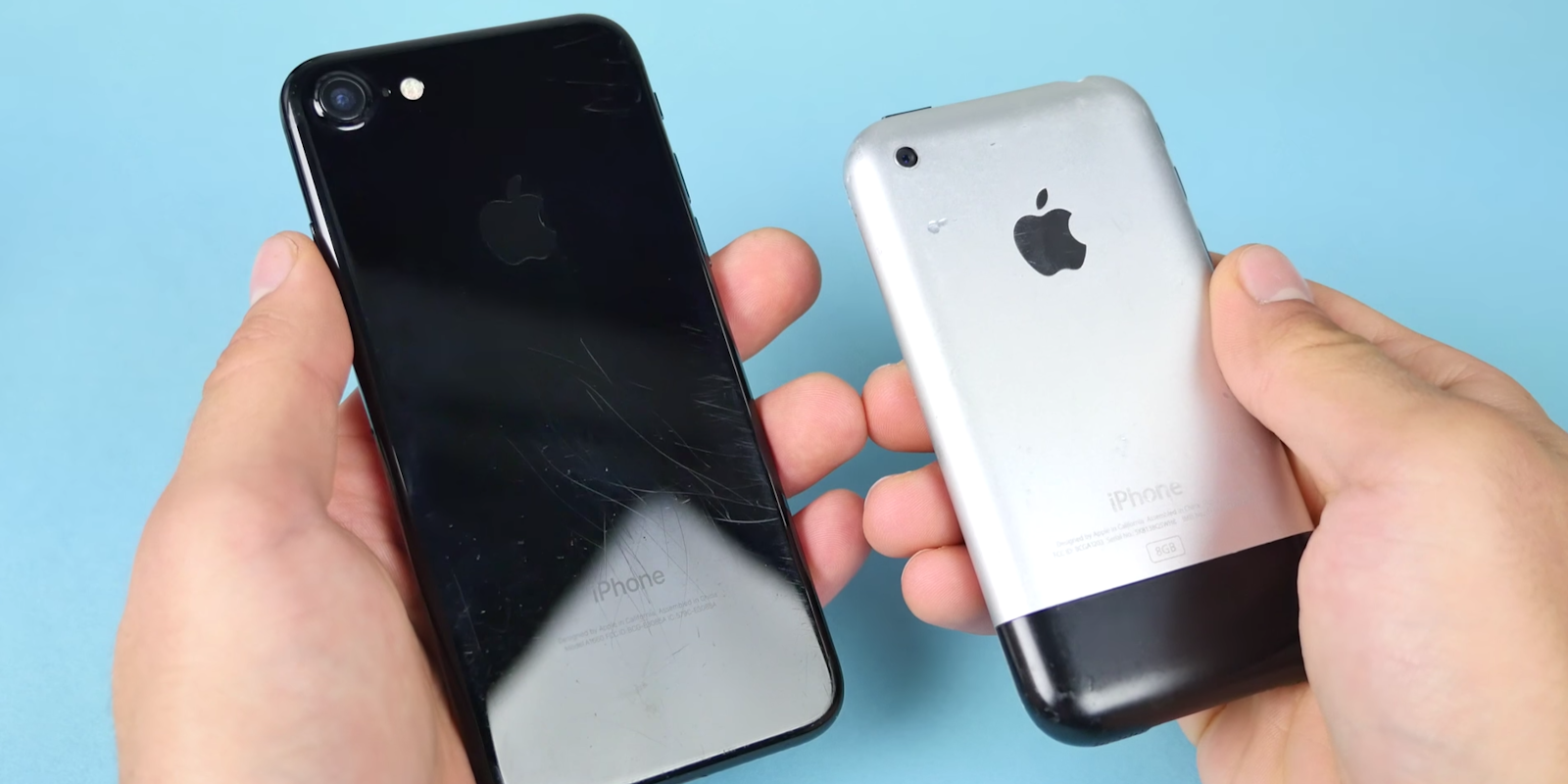Today marks the tenth anniversary of the original iPhone, the device that sparked a smartphone revolution and fundamentally changed the way we live our lives. While it wasn’t exactly a home run the moment it launched—Apple ended up reducing the price to increase sales during the holiday season—it is now considered one of the single most important devices ever sold.

Since the original iPhone, commonly referred to as the iPhone 2G, smartphone manufacturers have continually released new features—for better or worse—in a desperate attempt to emulate Apple’s early success. Of course, you would expect any smartphone you buy today to offer a better experience than the original iPhone, but exactly how far have we come since the moment Steve Jobs introduced the world to the combined “iPod, phone, and internet communicator?”
Let’s go back to that moment and compare some of the features introduced at Macworld 2007 to those unveiled at last year’s iPhone 7 launch event.
iPhone 2G vs iPhone 7: Design
Apple has shown its ability to produce extremely thin devices throughout the years, and the iPhone 2G was no exception. At 11.6mm, the 2G was the thinnest smartphone ever released at the time.
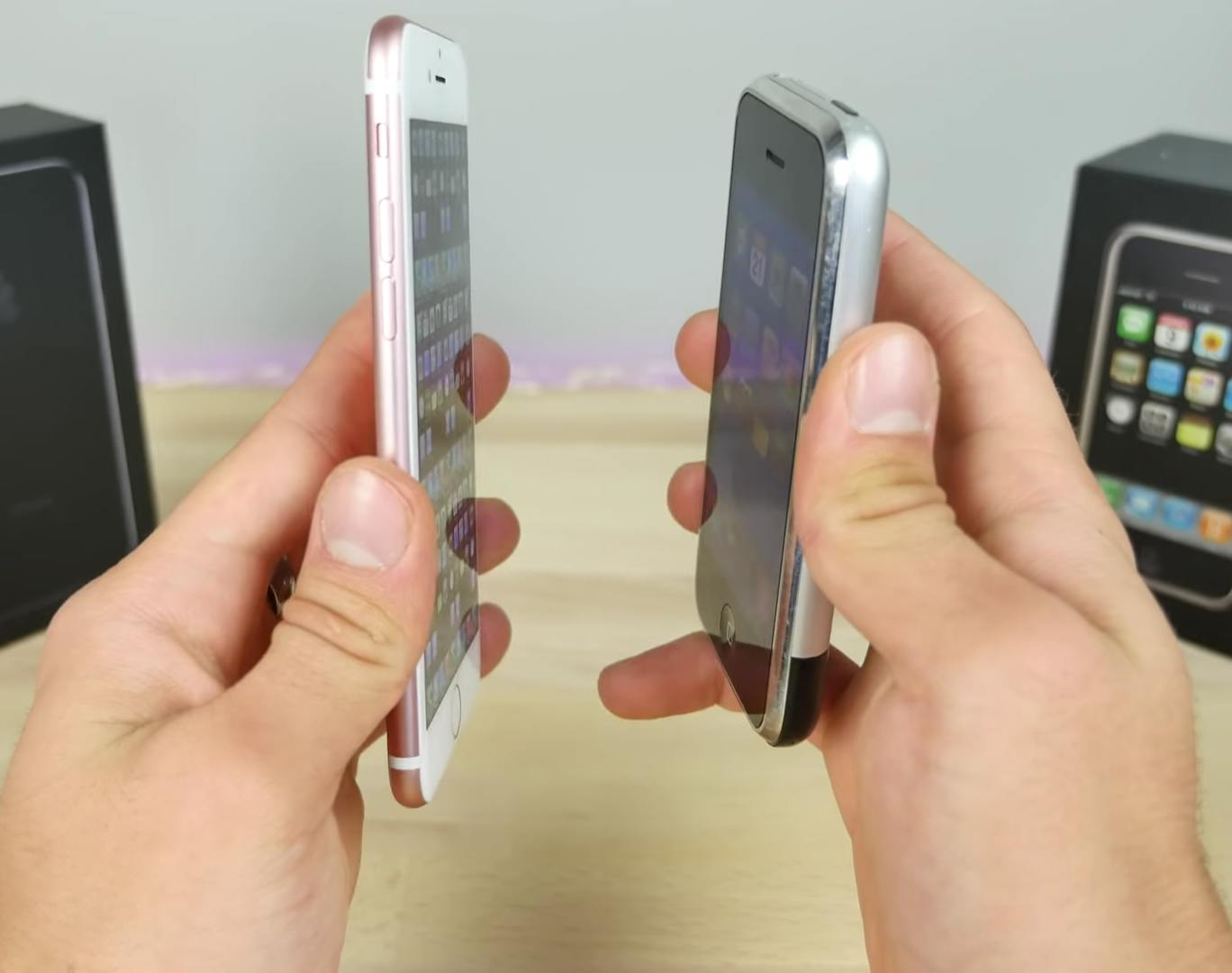
But if you were to pick one up today, it’d feel like you were hauling a brick around. The iPhone 7 is almost 40 percent thinner than the 2G, at just 7.1mm wide, and even the massive 7 Plus has a tiny 7.3mm waist.
But the current flagships’ large screens and metal build give the original iPhone the edge when it comes to weight. The 2G weighed 135 grams, three grams lighter than the iPhone 7, and you’ll need to work out your wrists if you want to use the 188 gram iPhone 7 Plus.
iPhone 2G vs iPhone 7: Display size
At the time the 2G was announced, almost all smartphones featured built-in keyboards on what Jobs called the “lower 40” of the device. This restricted the size of their screens considerably. In fact, most direct rivals to the first iPhone, like the Moto Q or Nokia E62, had screens that were smaller than 3 inches. Still, it’s hard to resist laughing at Jobs when he says, “What we’re going to do is get rid of all these buttons, and just make a giant screen, a giant screen.”
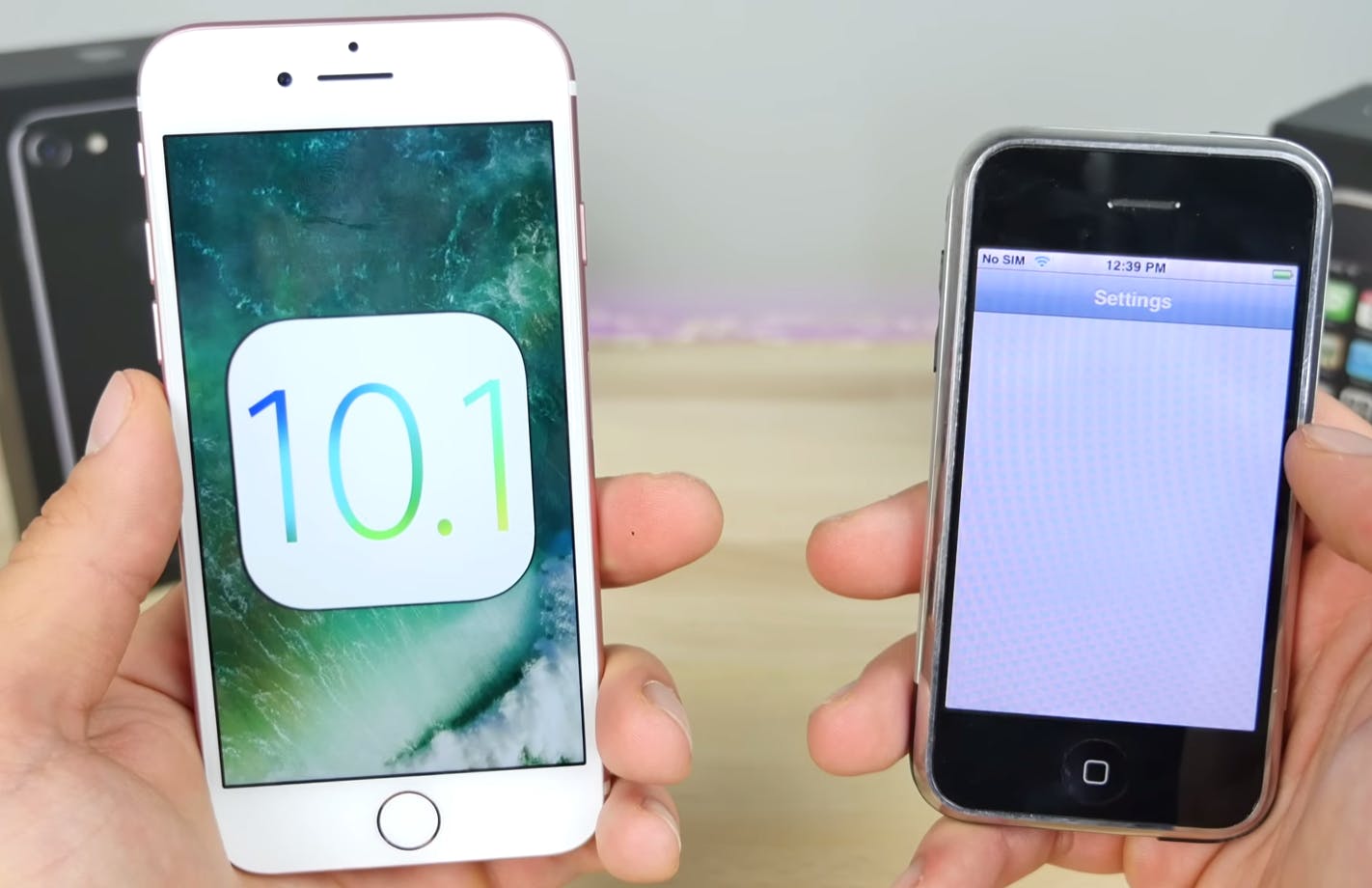
The iPhone 2G came with a “really big” 3.5-inch display. That is more than an inch smaller than the iPhone 7 and two inches smaller than the iPhone 7 Plus. Smartphone displays from competitors HTC and Samsung kept growing in the years following the 2G, but Jobs and Apple stuck with the size of the iPhone 2G until 2012, when the iPhone 5 was released with a slightly larger 4-inch screen—the same size display found on the current iPhone SE.
A larger screen obviously provides more real estate for multitasking and viewing content, but not everyone wants to haul around a device the industry once called a “phablet.” Still, at 3.5-inches, the iPhone 2G’s display size is not used on any recently released flagship smartphones.
iPhone 2G vs iPhone 7: Display resolution
Steve Jobs didn’t specify the display resolution when he introduced the first iPhone, but he did say it had a higher pixels-per-inch (ppi) than any screen Apple ever shipped. That shouldn’t be a surprise considering the iPhone 2G’s display is significantly smaller than those on the Mac.
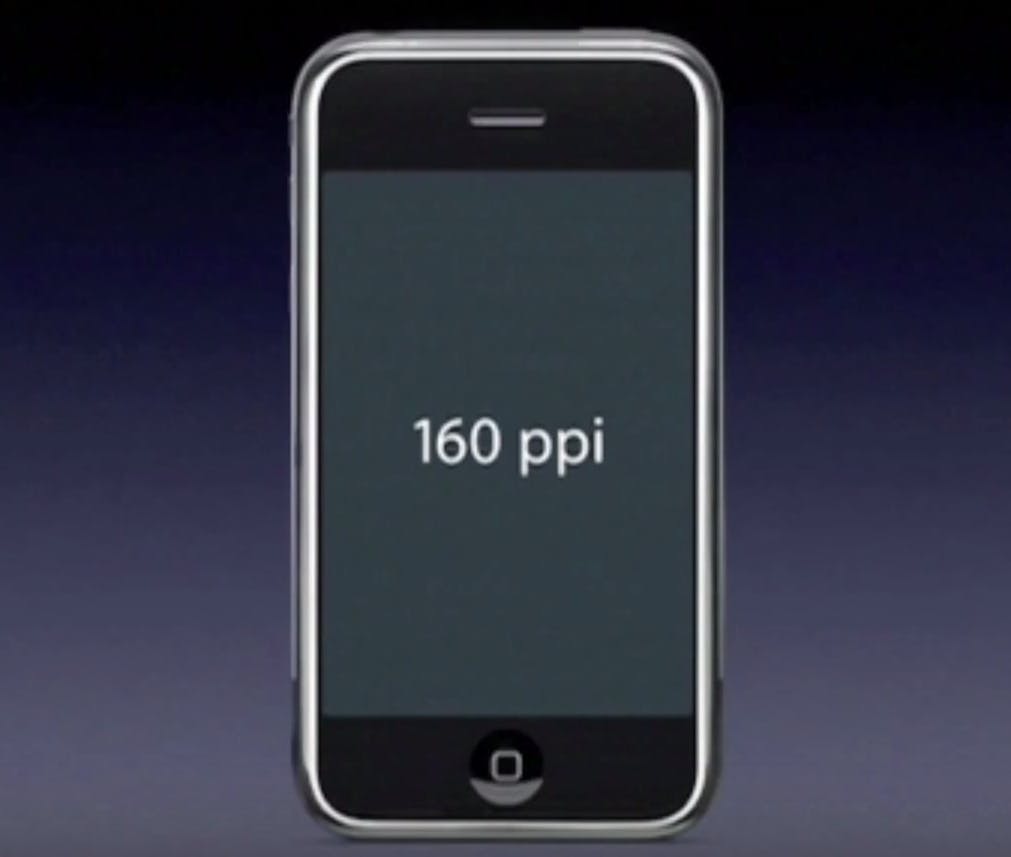
At 160ppi, the 320×480 resolution display on the original iPhone looks downright dreary when compared to any phone you can buy today. Screen resolution may be the biggest jump in hardware between the iPhone 7 and iPhone 2G. That is because of the tremendous advances we’ve seen in display technology over the last few years, which have brought the price of 4K TVs down to below $500.
In comparison, the iPhone 7 has a ppi of 326 at a resolution of 1334×750, and the iPhone 7 Plus has an even higher 401ppi at 1080p resolution. Things start to look even worse for the 2G once we throw Android competitors into the equation. The newly released Galaxy S8 has a staggering 571ppi, more than three times that of the original iPhone.
READ MORE:
- Everything we know about iPhone 8
- 19 iPhone apps no one should live without
- How to leave a group text message once and for all
iPhone 2G vs iPhone 7: Ports
The iPhone 2G came with a headphone jack, need I say more? In all seriousness, Steve Jobs made it a point to show the audience that they could use all of their (terrible) iPod headphones using the 3.5mm port. But back then, Apple headphones weren’t completely wireless, like the ill-received AirPods.
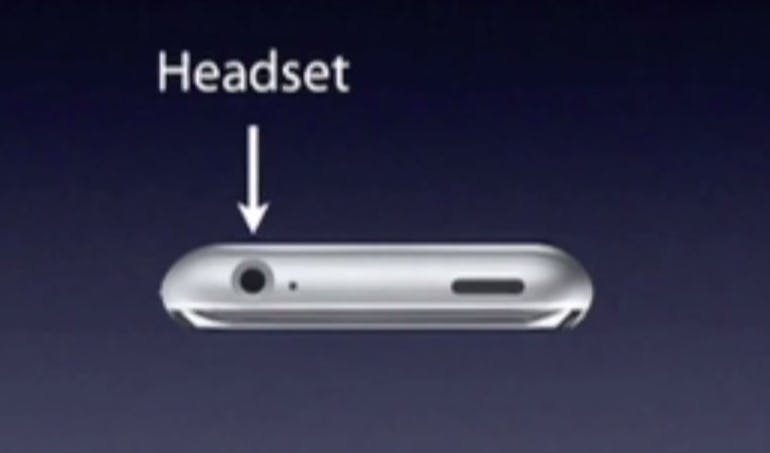
As an audio nerd, I can’t get myself to overcome Apple’s courageous decision to get rid of the headphone jack and “save space” on the iPhone 7 and 7 Plus, especially considering its rivals kept the port and went on to release phones with bezel-less displays. The iPhone 7 and 7 Plus look like their wearing thick-rimmed glasses when placed next to the Galaxy S8 or LG G6.
Where Apple has improved over the years is with the lightning cable. At least on paper. Out is the extra-wide 30-pin connector that plagued the iPod and iPhone in their early years, and in its place is a tiny lightening input. That sounds great until you start reading the more than 1,000 one-star reviews (out of 1,050) on the lightening connector’s product page. Thankfully, rumors hint that the upcoming iPhone 8 will support wireless charging.
iPhone 2G vs iPhone 7: Camera
One of the largest applauses during the introduction of the iPhone 2G is when Steve Jobs flips the phone around and shows off its 2-megapixel camera. Boy, have we come a long way. Current smartphones have rear-facing cameras featuring anywhere from 8 to 23-megapixels. In fact, five years ago, Nokia put an excellent 48-megapixel sensor on its 808 Pureview Windows phone. But megapixels aren’t the whole story.
Cameras now have much brighter lenses, optical image stabilization, and fancy software that can make pictures look like they were shot on a full-frame camera.
Ever since the release of the iPhone 2G, Apple has undeniably produced some of the best smartphone cameras in the world, and the iPhone 7 and 7 Plus are its best yet. Both sporting excellent 12-megapixel sensors that are capable of producing crisp, vibrant images.
The end of the video below compares shots between the iPhone 7 and iPhone 2G. The improvements are remarkable.
The smartphone industry has come a long way since the introduction of the iPhone 2G. As expected, phones released today are better in (almost) every way compared to the legendary phone from 2007. But this look back is less about how much better phones are today, and more about appreciating the iPhone 2G as the source of inspiration for the incredible devices we now all own.
So thank you iPhone 2G, and happy birthday.

